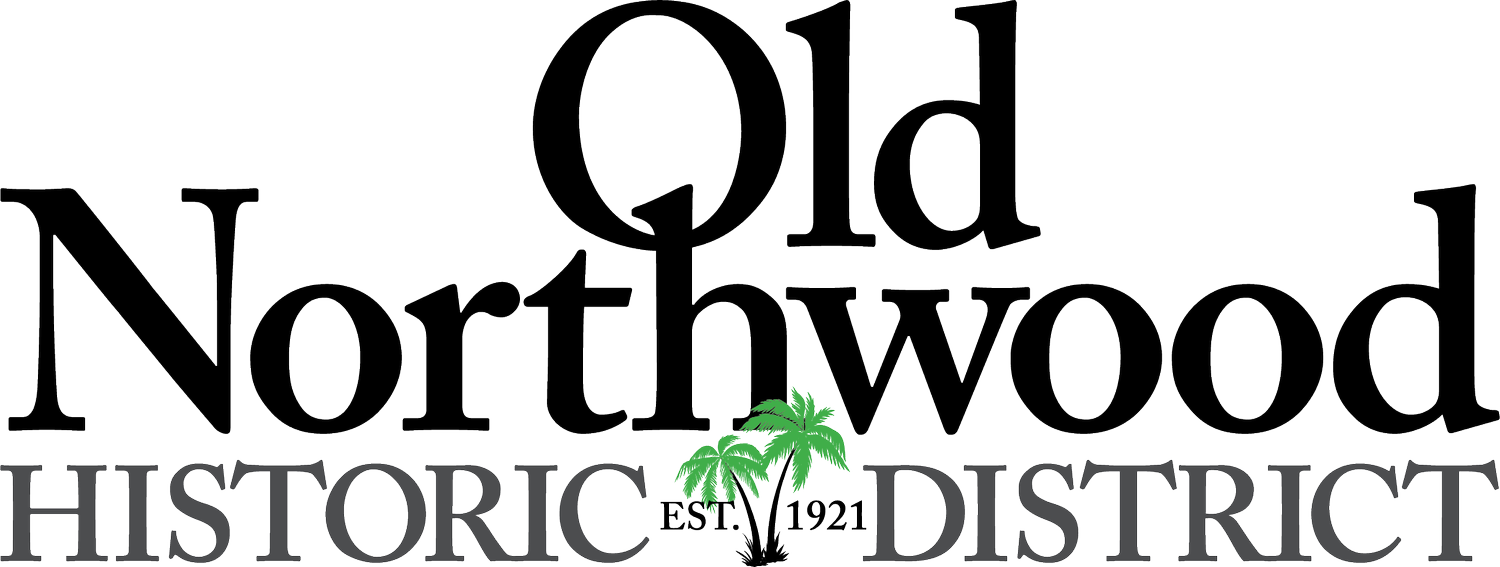
History.
In 1884, The Reverend Elbridge Gale retired to the area later to be known as Old Northwood. He was the first to build a cabin on the West side of Lake Worth. Gale grew mango trees and one of his trees became the first grafted Mangonia to bear fruit. The well known Haden variety was developed from the seeds of this tree. Gale’s home was known as Mangonia.
During the Florida Land Boom of the 1920’s the Pinewood Development Company, led by David F. Dunkle, purchased 400 acres, platted the area, and invited builders and architects to create homes of varying styles. 173 contributing structures were built between 1921 and 1929 consisting of Frame Vernacular, Mission-style, and Mediterranean homes. Over 50 individual builders were involved and notable architects include John Volk, Gustav Maass, William Manley King, and T.B. Eissfeldt. One of the district’s most unique features is the network of alleys that allow access to garages and other services.
Old Northwood quickly became a neighborhood of what was considered extravagant homes, priced at $30,000 to $36,000 each. The buyers were professionals, entrepreneurs and tradesmen. Among them was Dunkle, who was mayor of West Palm Beach.
Old Northwood remained a prestigious middle-class neighborhood into the 1960’s. By the 1970’s, however, the boom time glamour was gone. Many Old Northwood Houses were in disrepair, and the area was crime-ridden. But a small group of individuals set out to change the neighborhood, and began purchasing and renovating homes. The renaissance of Old Northwood accelerated in 1987, when residents formed an association to revitalize and restore this important part of West Palm Beach history. The neighborhood became the first designed West Palm Beach historic district in 1991 and was listed in the National Register of Historic Places in June 1994.
Because of the neighborhood’s determination to preserve itself, Old Northwood has become a leader in older coastal neighborhoods in the City of West Palm Beach.

Architectural Styles
Frame Vernacular
Most Frame Vernacular houses are rectangular, an economic shape. West Palm Beach builders often framed Vernacular dwellings with Dade County pine, which becomes very hard and is so resinous that it deters termites. Frame Vernacular houses often have steep pyramidal roof lines, roof overhangs with exposed rafter tails, wooden or sheet metal shingles (perhaps later replaced with asphalt or composition shingles), and dormers for attic circulation. Many exteriors are covered with horizontal plank siding, with patterned shingles covering the gables or second stories. Typically, the shingle patterns and roof brackets, plus porch railings or columns, are the only decorations.
Mediterranean Revival
The Mediterranean Revival houses are similar to the Mission style homes, but generally, have a more regular plan. A single house may combine a flat roof and parapet with gabled, hipped and shed roofs. Mediterranean Revival residences have more ornamentation and add wrought iron balconies, towers, and turrets.
Mid-Century Vernacular
Mid-Century Vernacular houses are built of brick or concrete block and have attached one-car garages or carports. They feature showcase front windows and front gable or hipped roofs topped with flat cement tiles. Typical layouts include a split bedroom plan, a Florida room in the back of the house, and a rear patio accessed by sliding glass doors. Other windows were jalousie or aluminum awning windows.
Mission Style
Mission style houses are either balloon frame or structural clay tile construction with a stucco finish. Most have a flat roof with a parapet. On the street facade, the parapet may have a curvilinear gable. Some Mission homes have gabled roofs. These are traditionally covered with barrel tile. Each house has a stucco chimney, some of which have tiled gable-roofed chimney tops. The ornamentation on Mission style houses is usually minimal, and confined to niches, over doors, or hoods surfaced with barrel tile, and occasionally a decorated architrave surrounding the main entrance. The front door is often of heavy wood with wrought iron hardware.






